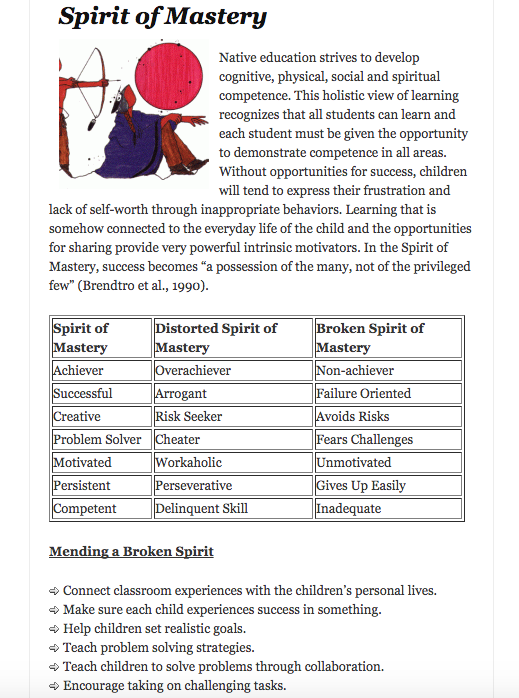I would like to focus my research on the instructional design of e-learning in higher education that incorporates the Indigenous experience and meets the needs of Indigenous learners. I tried to get resources specifically from higher education, but found one with K-12 resources:
Cape Breton University. (n.d.). MIKM 2701: Learning from Knowledge Keepers of Mi’kma’ki [Course Description].
This course answers calls from the Truth & Reconciliation Commission (to incorporate Indigenous knowledge and perspectives into higher education curriculum) by sharing the “history, culture, and wisdom of Indigenous peoples in Mi’kma’ki and across Canada.” It is offered for-credit or for general interest to the public. Classes from the Winter 2016 offering were live webcasted and then archived online.
Indspire (n.d.). K-12 Institute: Successful Practices.
This Canadian Indigenous-led registered charity includes 1000 resources in their online resource centre for Indigenous education stakeholders. Proven practices in the form of research, models, frameworks and educational strategies are shared for K-12, across subjects, provinces, grade levels, topics (e.g., online learning, holistic learning practices) and Indigenous affiliations.
Koissaba, B.R. (2014). E-learning principles and practices in the context of Indigenous peoples: A comparative study. Cultural Survival Quarterly.
This article is published by Cultural Survival, an organization that “advocates for Indigenous Peoples’ rights and supports Indigenous communities’ self-determination, cultures and political resilience” (Cultural Survival, n.d.). The article highlights cases of e-learning in Indigenous communities from Australia, Kenya and the United States, and includes recommendations to develop e-learning practices that better serve the needs Indigenous communities.
Reedy, A., Gulwa, H.W., Charles Darwin University, & Marmaruni School. (2016). Online learning and teacher education: The experiences of Indigenous teacher education students. Learning Communities: International Journal of Learning in Social Contexts, 20, 40-51.
This article looks at the needs of Indigenous post-secondary students taking online courses in Australia. The data was collected through “yarning,” a conversational research method, and a research study into the experiences of Indigenous post-secondary students in order to inform the design of online learning environments.
The University of British Columbia. (2017, February 21). ‘The little MOOC that could’: Online course promotes Indigenous ways of knowing [Media Release].
This is a media release about a massive open online course (MOOC) that introduces participants to indigenous histories and worldviews and shares teaching tools on indigenous education. The third offering ran in Winter 2017 with 8,200 registrants (mostly educators), and the next offerings are slated for Fall 2017 and Winter 2018.
